Inside Out: an Interview with Ellen Dempsey
by Side x Side Contemporary-May 21, 2020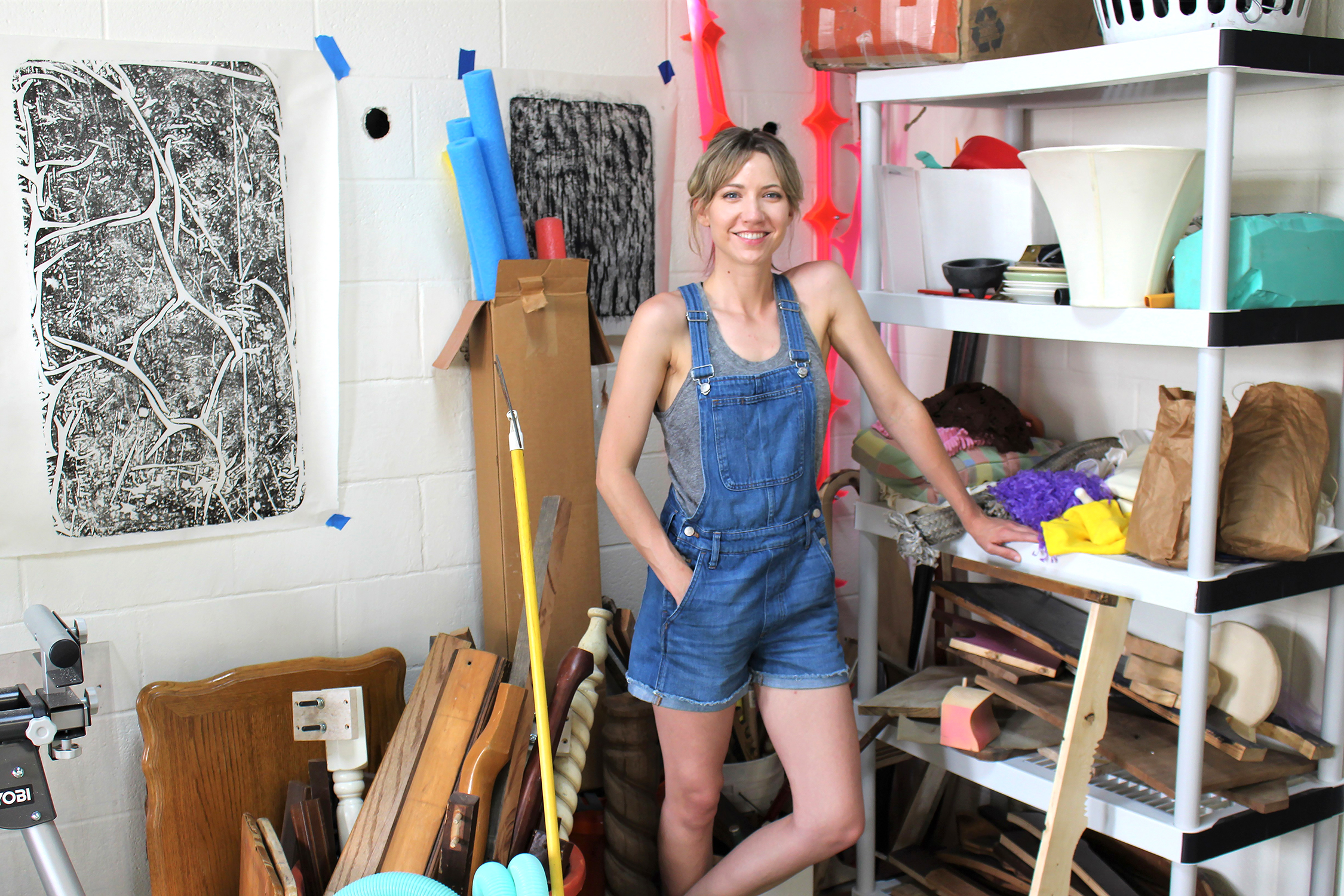
Through the lens of discarded domestic debris and everyday routines, Ellen Dempsey investigates the politics of the home. She plays with our familiar/strange relationship to the everyday by creating sculptural assemblages from commonplace cast-offs that challenge the neutrality of the spaces we occupy.
Dempsey studied Sculpture and Printmaking at Middle Tennessee State University and received her MFA from the University of Memphis. The University of Memphis owns four of her pieces, two of which are in the president’s office. She was awarded the International Sculpture Center’s Outstanding Student Achievement in Contemporary Sculpture Award and her work was featured in Sculpture magazine. She has exhibited throughout the Southeast and currently lives and works in Nashville, TN.
Thank you for taking the time to chat with us! Can you tell us a little bit about your background and where you are from?
Thank you so much for giving me the opportunity to share my work! I was born and raised in Nashville, TN. My family is not from the South and is scattered throughout the US and I have always struggled with the strong Southern identity that exists here. My grandparents lived in Phoenix, AZ and I always wanted to move out west. However, I recently moved back after spending a few years away going to grad school and teaching. Even though I was never more than 5 hours away, moving away made me appreciate middle Tennessee and this city in particular. It is a beautiful place to live and the art community is incredibly supportive. But I do still have my sights on California.
How did you start your journey as an artist?
Art has always been a part of my life. When I was 5, my kindergarten teacher suggested that my parents enroll me in art classes which I continued to take until I was a teenager. I had a very supportive family and never questioned being an artist (until I was much older). I knew I wanted to major in Art in college and knew by the very first class I took of 3-D Design that whatever that was, I wanted it. I earned my BFA in Sculpture in 2008 and after graduation, I worked in museum education until the financial crisis and lost my job. I used the time to apply to graduate school and got in with a full ride. I even put a deposit down on an apartment.And that’s when, for the first time in my life, I questioned being an artist. The economy had plunged and what was I doing getting another art degree? I turned down graduate school and worked dead-end jobs for 7 years. I worked as everything from an administrative assistant for a plastic surgeon to managing a holistic wellness shop to being an animal care technician at a research lab. After a string of 5 jobs in less than twelve months, I realized I was miserable. It took that experience and an absence of art to understand that I didn’t need to know what being an artist had to look like, but I needed it to survive. I went to grad school in 2015 and spent three blissful years in sculpture heaven. I have lived and breathed art and sculpture since, fulfilled and challenged daily.
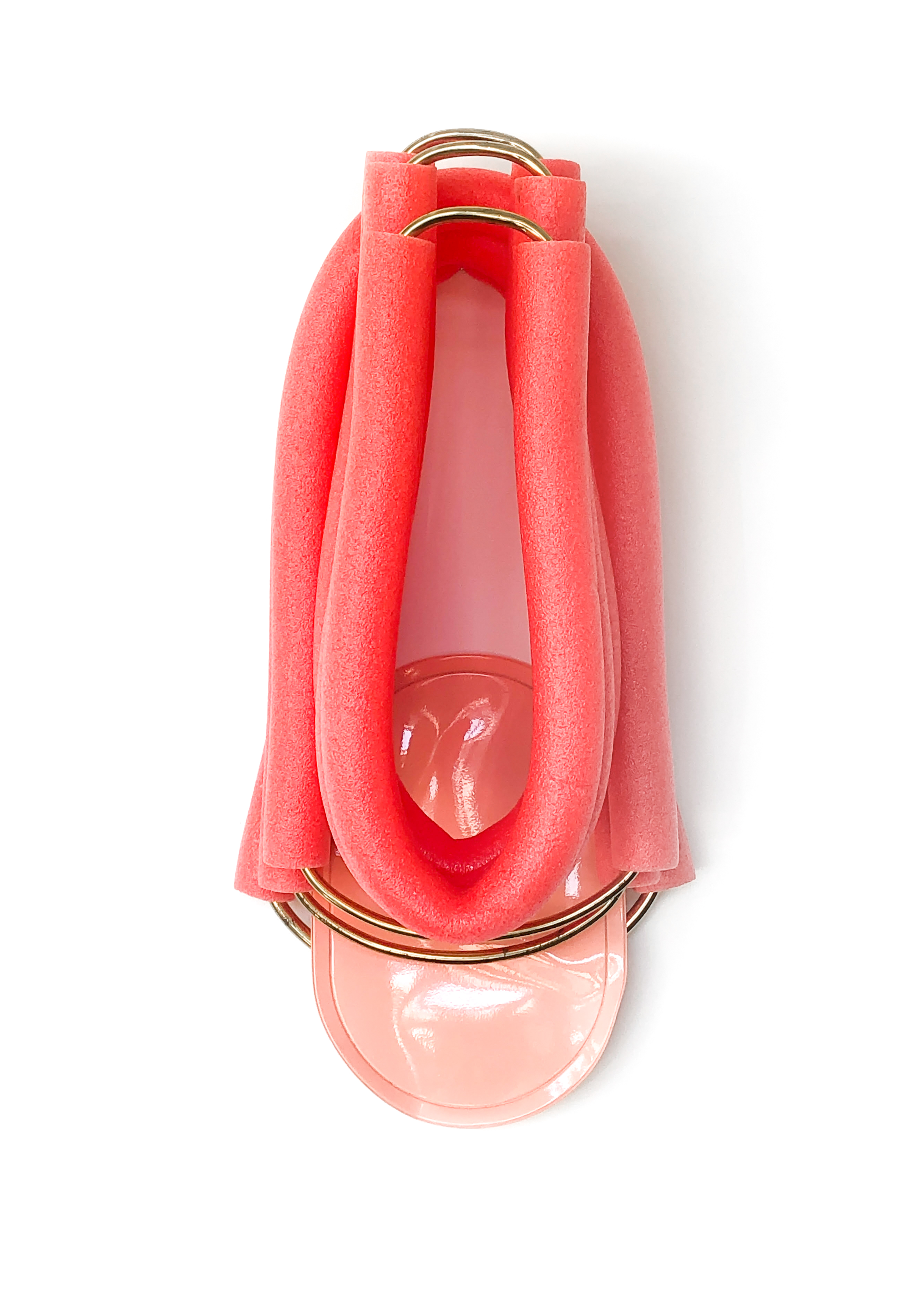
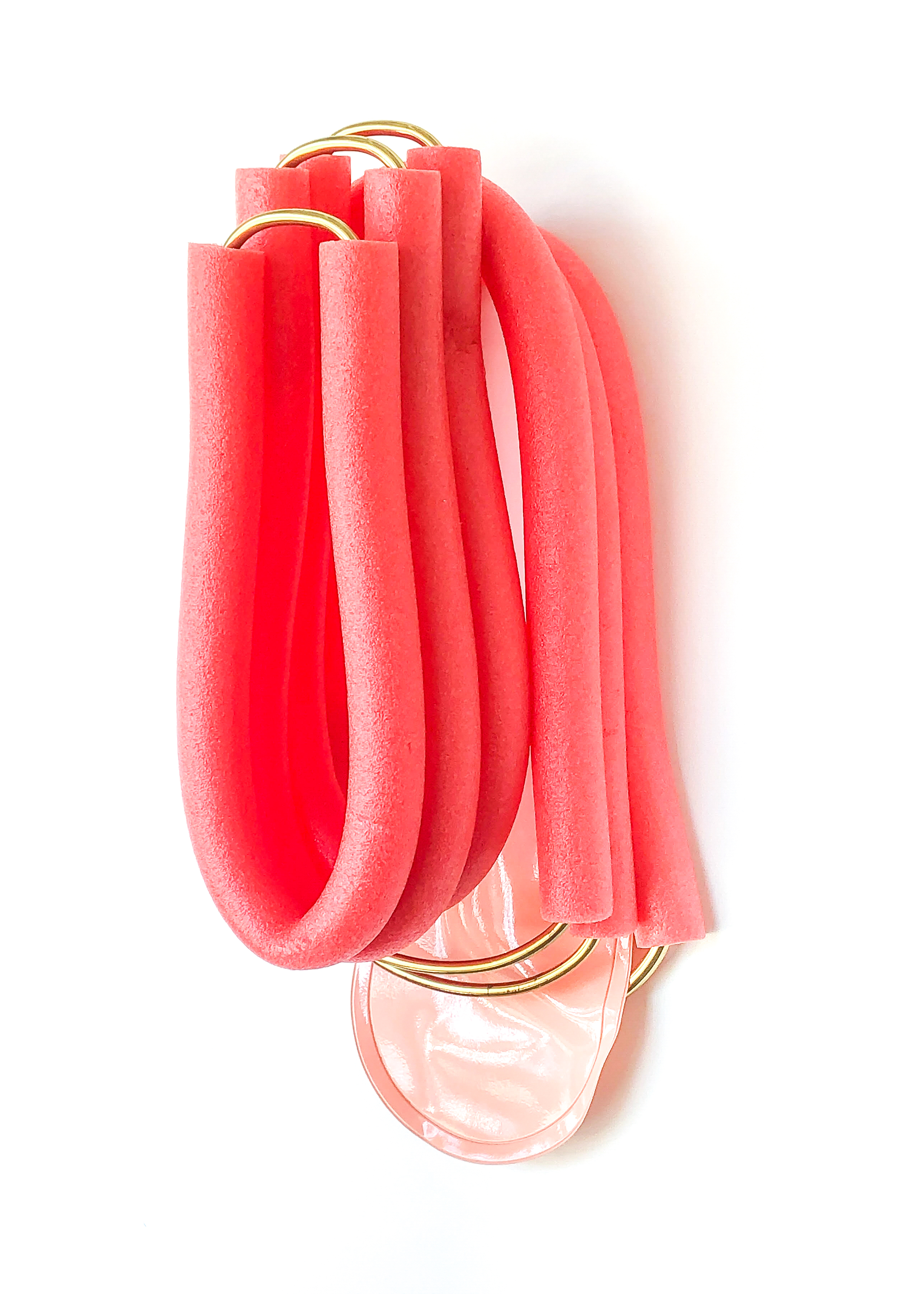
In your sculptural pieces, everyday objects lose their practical usage and new assemblages are created that look familiar but strange. Tell us a bit about this “strange new intimacy” that your work creates.
Since I was a kid, I have always liked to perform characters and have always used objects as stand-ins for myself - like a puppet show. My interest in furniture came from this sensibility of making the stuff we live with everyday, that we look at everyday, talk back, or act out. I have recently been very interested in this notion of intimacy, particularly in relation to a space. What makes a space intimate? Is it the size? Its location? Does it relate to a physical act? Can a public space be intimate? There is a forced intimacy happening now which creates a wild ride of emotions, all that can play out in the course of a day. These emotions are projected onto the people and things we live with.
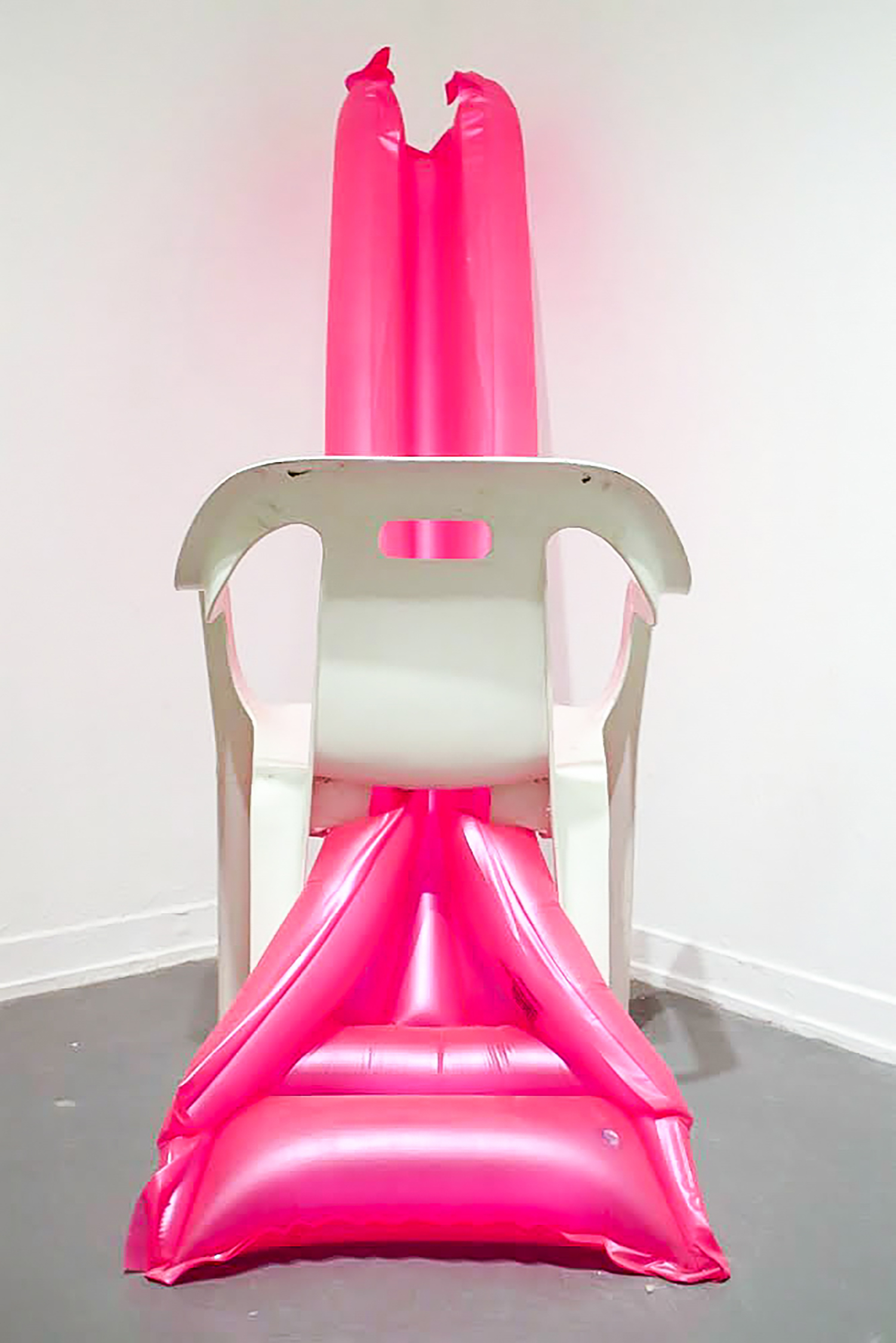

It seems that nothing is in its own place and our normal is under question. Can you talk about this idea of normality that your work is questioning?
I think essentially, I am questioning the notion of public and private space and what actions and objects and people are allowed in each. For me, these questions are deeply embedded in traditional gender roles, like the woman belonging at home and the man belonging outside in the workforce. We sometimes don’t question what we are comfortable with or what we are used to and, like a cast in a mold, can take the shape of our prescribed backgrounds over time. We perform roles in our life from the gender we were assigned to the personality traits we have been trained to exhibit. So, taking objects that belong in a private space and making them feel public, or subtly changing their orientation, is a way to alter a viewer’s perception of that object, even just slightly, so that they approach that object differently in the future.

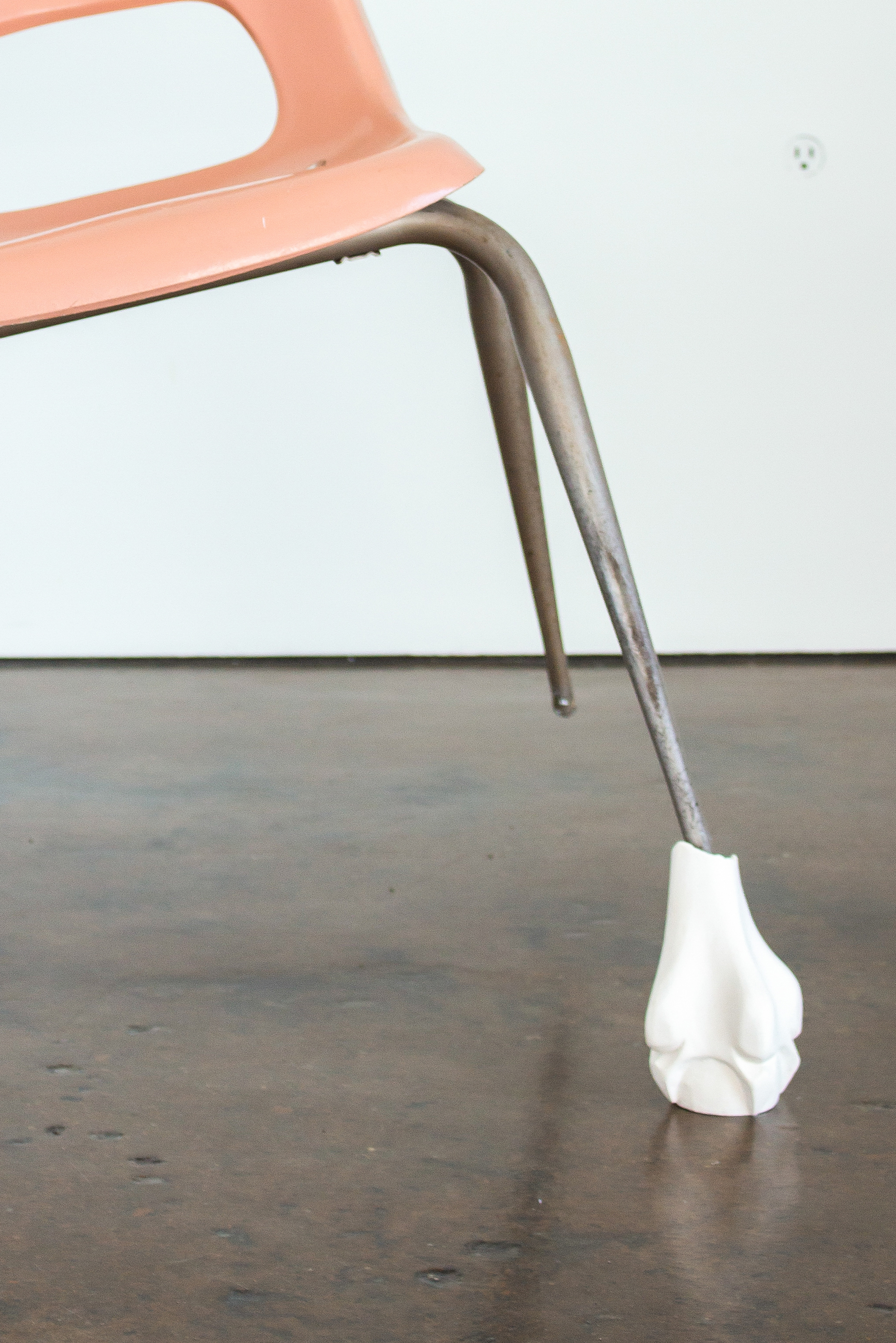
How has the idea of “home” changed for you during this time of social distancing?
The idea of home has totally flipped. The private and public spheres collide as conference calls with coworkers happen on our couch. The outside is now inside - which has been made possible largely by technology and the internet. It has been very interesting to see marketing strategies that now suddenly engage with the physical space of the home as companies try to scramble from the economic impact of the virus. Everybody is now much more involved with what their homes are made of and who is in them. I think there is a slowness and awareness to the home that wasn’t there before. This may be fueling my interest in intimacy - we are so tuned in to who and what we share our homes with. How will this effect who we are in public once we are able to exist outside of our homes again?

How do you find your materials? Can you tell us a bit about your work process?
My process for making work feels like it lies somewhere in between interpretive dance, improv stand-up, and premeditated murder. I can have very clear intentions on a sculpture and an item I collected five years ago will suddenly pop out from a shelf and totally derail everything (in the best way possible). I collect things without really knowing what I will do with them, I usually have some type of immediate affinity towards a thing that is steeped in formal attraction (color, texture, shape). These items more often than not are domestic and industrial debris, either bought new because of its connotations (like concrete or rubber) or found objects that carry the weight of their history, like discarded tables on the side of the road or knick-knacks and doo-dads in thrift stores. The way I collect materials/things is the way some people buy paint, with the right variety of found color and texture I can create a finished piece. But, usually the history of the materials oftentimes directs me.

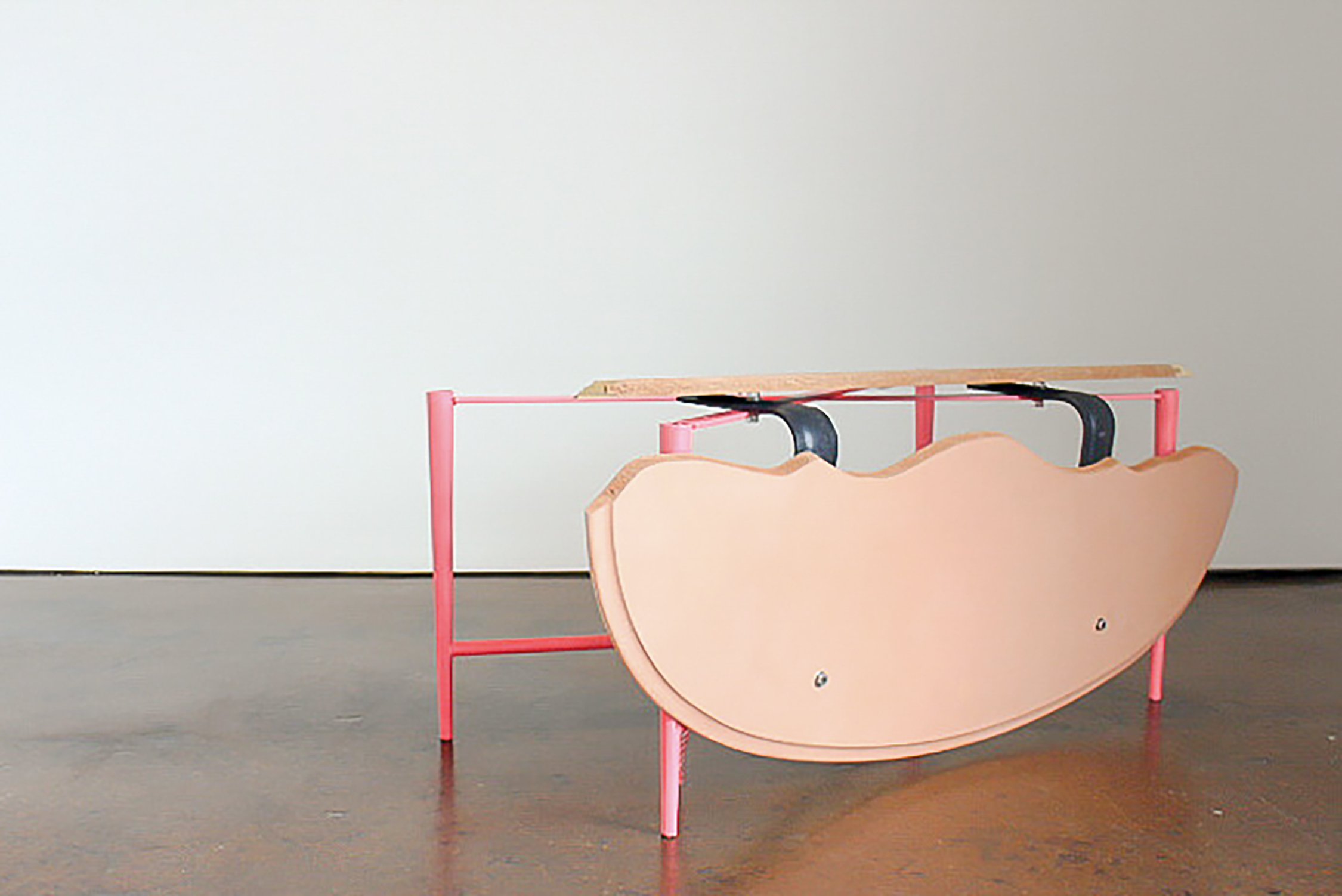
Who inspires you as an artist, or who are your favorite artists right now?
My Mt. Rushmore is Louise Nevelson, Marisol Escobar, Robert Rauschenburg, and Claes Oldenburg. I am constantly inspired by artists who push the medium of sculpture and lately it has been artists who are combining objects and performance, like Erin Wurm, Martha Friedman (thank you to Michelle Hagewood who recently introduced me to her!), and Tai Shani.
We are always interested in hearing about how artists are finding the resources they need to thrive. Where do you find your community and what have been some helpful ideas or places for you along the way?
I am very lucky to be part of a supportive and vibrant art community in Nashville. I am a member of an artist-run art gallery and collective called COOP that keeps me in conversation with artists not only across the city but the country as well. Recently, the idea of an arts community is having to adapt. Like many people, I was in a terrible mental space when the pandemic hit, especially towards art-making. Making art without a physical community felt like pissing in the wind. But on a whim, I joined an online critique group organized by Kaylan Buteyn of “Artist/Mother Podcast”, even though I am not a mother. The sense of connection and community I have had with the other artists in my group who live across the country has been nothing short of life-saving. The ability to continue talking about art in a meaningful way and being held accountable for making art has been incredibly helpful during this isolation.
Image list:
-Ellen Dempsey, Pin Up, 2020, Pool noodles, placemat, brass fixtures
-Ellen Dempsey, Inside Out, 2017, Lawn Chair, pool float
-Ellen Dempsey, Foot in a Cast, 2020, School desk chair, plaster cast of clawfoot table leg
-Ellen Dempsey, Come Around, 2018, Table, saucers, cup, hand-printed impression of table top on table cloth
-Ellen Dempsey, Mundane Morphology, 2019, Table and chair parts, paint
*For more info on Ellen Dempsey’s work, please visit her website & Instagram
*You can see Ellen Dempsey’s exhibition here.
Images © 2020 Ellen Dempsey
Interview by:
Side x Side Contemporary
Krista brand & Mana Mehrabian